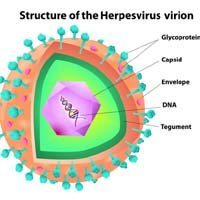Immunohistochemical Staining and Sarcomatoid Mesothelioma: Beyond the Lab
 When it comes to understanding individual cases of sarcomatoid mesothelioma, doctors should not rely too heavily on immunohistochemical staining.
When it comes to understanding individual cases of sarcomatoid mesothelioma, doctors should not rely too heavily on immunohistochemical staining.
That conclusion comes from mesothelioma researchers at MD Anderson Cancer Center in Texas.
The researchers just released a new study focused on this rare mesothelioma subtype. A patient’s subtype has an impact on what kind of treatment could work best for them. Sarcomatoid mesothelioma is usually less responsive to chemotherapy.
Immunohistochemical staining is a pathology technique. It is the main way that doctors tell the difference between mesothelioma subtypes.
But the MD Anderson report suggests that not all cases of sarcomatoid mesothelioma are created equal. The researchers say it is important to look beyond the lab findings to understand individual cases.
Malignant Mesothelioma Subtypes & Prognosis
Asbestos is the main cause of mesothelioma. Doctors classify mesothelioma type by the area of the body where it occurs. Pleural mesothelioma, in the membrane around the lungs, is the most common type.
Mesothelioma is further classified by the type of cells in the tumor. Doctors use immunohistochemical staining to decide which subtype they are dealing with. Epithelioid mesothelioma is the most common – and most survivable – subtype. Sarcomatoid mesothelioma cells are much less common. They are shaped differently and respond to treatment differently.
The third mesothelioma subtype is biphasic. This subtype includes both sarcomatoid and epithelioid cells. Treatment for biphasic mesothelioma depends on the percentage of epithelioid versus sarcomatoid cells in the tumor.
The Limits of Immunohistochemical Staining
The MD Anderson study included 64 patients with sarcomatoid pleural mesothelioma. There were 51 men and 13 women. Patients ranged in age from 42 to 79.
The patients all had mesothelioma symptoms like cough, chest pain, and weight loss. Imaging scans showed thickening of the pleural membrane. All patients had radical EPP surgery to remove their mesothelioma tumors and one of their lungs.
Immunohistochemical staining confirmed sarcomatoid mesothelioma. But there were big differences in gene expressions of the different tumors.
“All cases were positive for cytokeratin AE1/AE3; however, reactivity with other markers including keratin 5/6, calretinin, and D2-40 was seen in different proportions, whereas a few cases showed positive staining for GATA3, WT1, and p40,” writes lead author Diana Oramas.
The researchers conclude that doctors should not rely too heavily on immunohistochemical staining. Even if the cells are sarcomatoid, the tumor may have other properties that could impact treatment choice and responsiveness.
Instead, the researchers recommend a “global interpretation” of each tumor. This includes lab reports, clinical assessment, and imaging studies.
As many as 2,500 people will face a mesothelioma diagnosis in 2021. Despite persistent pressure from mesothelioma advocacy groups and mounting scientific information on the dangers of asbestos, the US has not banned this carcinogen.
Source:
Oramas, D, et al, “Sarcomatoid Mesothelioma: A Clinicopathological and Immunohistochemical Study of 64 Cases”, International Journal of Surgical Pathology, Online ahead of print, https://journals.sagepub.com/doi/10.1177/10668969211014256





